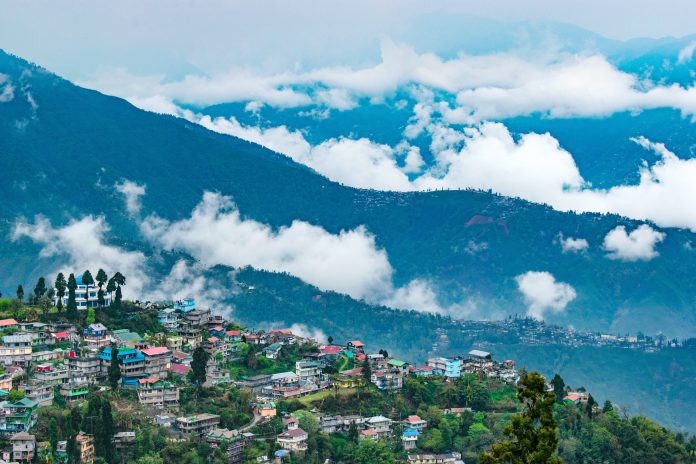By Journey Man
Darjeeling District is the northernmost district of the state of West Bengal in eastern India in the foothills of the Himalayas. The name Darjeeling comes from the Tibetan words Dorje, which is the thunderbolt sceptre of the Hindu deity Indra, and ‘ling’, which means ‘a place’ or ‘land’.
Popularly referred to as the ‘Queen of the Hills’, Darjeeling is one of the most spectacular hill stations in India. Darjeeling possibly offers the world’s best naturally flavoured tea, famous for its unique ‘muscatel’ flavor. The European Commission has registered Darjeeling Tea as a Protected Geographical Indication (PGI) product – the first commodity from India to get such a tag. The status implies that the brew produced only in Darjeeling can be sold as Darjeeling Tea in the European Union countries.
Darjeeling is also a popular tourist destination in India.
Darjeeling conjures visions of snow peaks, serenity of vibrant green hills steeped in splendour, a land of breathtaking beauty crowned by the majestic Himalayas. Darjeeling is one of the most magnificent hill resorts in the world. This heavenly retreat is bathed in hues of every shade. Flaming red rhododendrons, sparkling white magnolias, miles of undulating hillsides covered with emerald green tea bushes, the exotic forests of silver fir – all under the blanket of a brilliant azure sky dappled with specks of clouds, compellingly confounds Darjeeling as the Queen Of Hill Stations. The crest of Kanchenjunga shining in the first dawn light truly supports the title.
History of Darjeeling
The name ‘Darjeeling’ came from the Tibetan words, ‘dorje’, meaning thunderbolt (originally the sceptre of the god Indra) and ‘ling’, a place or land, hence ‘the land of the thunderbolt’.
A landmark year in the history of Darjeeling was 1835, but it would be appropriate to trace its history before that. Prior to its acquisition by the East India Co. in 1835, Darjeeling formed a part of Sikkim and for a brief period of Nepal. However, neither the history of Sikkim, nor the history of Nepal furnish any account of its early history.
Previously Darjeeling formed a part of dominions of the Raja of Sikkim, who had been engaged in an unsuccessful warfare against the Gorkhas. From 1780 the Gorkhas constantly made inroads into Sikkim and by the beginning of 19th Century, they had overrun Sikkim as far eastward as the Teesta and had conquered and annexed the Terai. EC Dozey, in his ‘Darjeeling Past and Present’ writes, ‘Prior to the year 1816, the whole of the territory known as British Sikkim belonged to Nepal, which won it by conquest’.
Acquisition by the East India Co.
A landmark year in the History of Darjeeling was 1835. Prior to its acquisition by the East India Co. in 1835, Darjeeling formed a part of Sikkim and for a brief period of Nepal. In 1863, Ashley Eden was deputed to negotiate with Bhutan. In November 1864, the treaty of Sinchula was executed in which the Bhutan Dooars with the passes leading into the hills and Kalimpong were ceded to the British.
The Darjeeling district can be said to have assumed its present shape and size as 1234 sq. miles in 1866. August 15, 1947 saw India becoming a sovereign, socialist, secular and democratic republic. Thereafter, the district administration has been continuously upholding the values that the country was based on.
The first road connecting the town with the plains was constructed between 1839 and 1842. Darjeeling became the formal summer capital of the Bengal Presidency after 1864. The opening of the Darjeeling Himalayan Railway in 1881 further hastened the development of the regions.
Major tourist places
Tiger Hill
It is 11 km from the town of Darjeeling and can be easily accessed through roadways from Darjeeling. After the Ghoom station, it can be reached either by jeep or by foot through Chowrasta, Alubari or Jorebangla and then climbing up the incline to the summit. You will need to take the narrow uphill Senchal road on the right. It takes about 40 minutes from Darjeeling town to reach to the summit by car.
Hired car or a shared jeep from the club side taxi stand at the base of Nehru Road below the Mall and tax from Chowk Bazaar area is also available.
Tiger Hill is not just a high spot, but probably a spot from where the best sunrise can be seen in the country.
Shanti Stupa
The Shanti Stupa was established by Nipponzan Myohoji, a Japanese Buddhist order. Situated on the slopes of the Jalapahar Hill the pagoda can be reached by foot or by taxi. The pagoda is the highest fee structure in the town. It also showcases the four avatars of the Buddha.
Toy train
Riding the Toy Train of Darjeeling Himalayan Railways (DHR) has always remained a coveted experience to the tourists. Only few would let go of such an opportunity. And there is a clear reason why so. After all, this Toy Train has been accorded the UNESCO World Heritage Site status in December 1999.
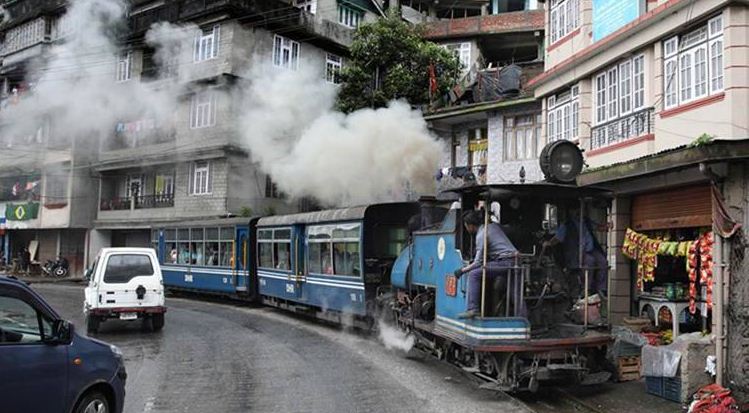

Although the diesel engines used these days are faster and more powerful, the original steam engines still operate in some sections and also for joyrides. The steam loco drawn trains sometimes tend to skid in steep gradients. You can often see an attendant standing in front of the engine and sprinkling sand on the track to overcome such difficulties, particularly in monsoon time.
Tenzing Rock
Tenzing and Gombu rocks are situated on Lebong Cart Road and face opposite to each other. The huge Tenzing rock is named after Tenzing Norgay, who was famous for climbing Mount Everest accompanied by Edmund Hillary in the year 1953.
Ava Art Gallery
At an Outskirt of town and 4Km away, AVA art gallery was jointly established in 1965 by Late Ava Devi who was as genius as embroidery art , and Bhopal Rao Sett.
This is the only art gallery of its kind in Darjeeling. Inside, there is a permanent collection of sixty pieces of Ava Devi including water, oil and Thread painting.
There are two special paintings in this gallery that you should not miss. One is called ” Still Strong” and the other “Torture” that reflects Ava Devo’s outstanding skills in the field of Art work. There are also many traditional paintings in the gallery. You can check out some handmade embroidery and skill applique as well. The silk work has been done by splitting the silk thread some 20 times.
Happy Valley tea garden
Happy Valley Tea Garden was established by David Wilson in the year 1854, which was then known as Wilson Tea Estate. This Darjeeling tea garden got its present name in the year 1929, when Tarapada Banerjee, from Hoogly, bought it and then merged the nearby tea estate named Windsor Tea Estate, which happened sometime in the year 1903. Hence the bushes of this tea estate date between 80 years to as old as 150 years.
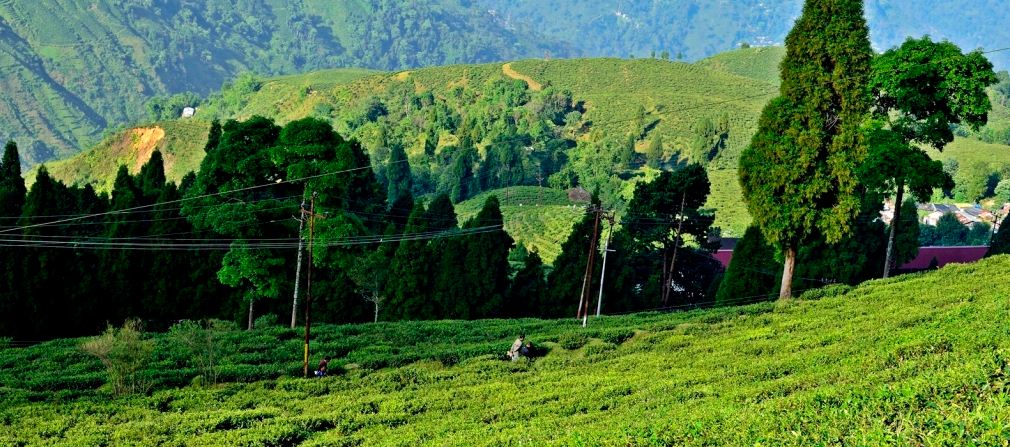

St Andrew’s Church
Andrew’s is an old Anglican church and the early worshippers of the church included many Scottish soldiers and tea planters living in the Darjeeling Hill area.
Named after the patron saint of Scotland St. Andrew, the foundation stone of the church was laid by the British in 1843 CE and was completed in 1844. The church was badly damaged by an earthquake and had to be rebuilt in the year 1873. The early worshippers of this church included many Scottish soldiers and tea planters living in the Darjeeling Hill area. The church is able to accommodate the congregation of about 200 persons.
The church was built in Gothic Style of architecture which is one of the signature styles of British architecture. The origin of this architecture is believed to date back to the 12th century AD. Some of its characteristics include the pointed arch, the ribbed vault and the flying buttress, most of which is found in the St. Andrew’s Church. The ambience inside the church is very spiritual, ethereal and quiet.
Victoria Falls
The Victoria Falls was located at Darjeeling town in the Darjeeling district. It was one of the stunningly beautiful waterfalls of the area. It originated from a small stream named Kalijhora. The waterfall had a height of 100 ft. The waterfall used to plunge from the 100 ft and rushed down through the deep ravines. The stream flew to Sidrapong. There is one bridge over the stream of the Victoria Falls. It is a 100 years old Ferro-concrete bridge known as Victoria Bridge. This 110 ft. long bridge was built by the British in 1912. There is a hydel power project on the stream of the falls where electrical power is generated for Darjeeling by harnessing the water from it.
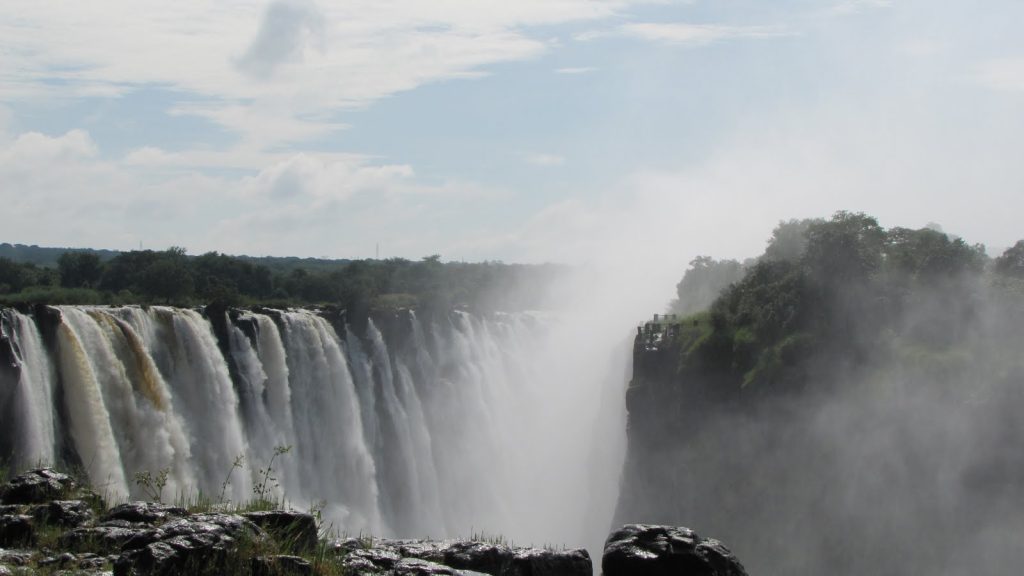

Culture & heritage
The culture of Darjeeling is quite diverse. Apart from the major religious festivals like Diwali, Christmas, Dussera, Holi, Ram Navami etc., the diverse ethnic populace of the town also celebrates several local festivals. The Tibetan ethnic groups like the Lepchas, Bhutias, Gurungs and Tamangs celebrate New Year, also called Losar, in January/February. Other festivals like Maghe Sankranti, Chotrul Duchen, Buddha Jayanti, and TendongLhoRumfaat, to name a few, provide the regional distinctness of Darjeeling’s local culture from the rest of India. Darjeeling Carnival, initiated by a civil society movement known as ‘The Darjeeling Initiative’, is a ten-day carnival held every year during winter that especially portrays the rich musical and cultural heritage of Darjeeling Hills as its central theme.
The Lepchas and Bhutias celebrate the New Year in January, while the Tibetans have their Devil Dances to celebrate their New Year in their monasteries from the last week of February to March. As in the Chinese tradition the snake or dragon dances curl through the streets. In mid-June, processions celebrate the birthday of His Holiness, the Dalai Lama.
During the British Raj , Darjeeling temperature & climate led to its development as a hill station for British residents seeking to escape summer heat. Arthur Campbell, a surgeon with the Company, and Lieutenant Robert Napier established this hill station. There’s also a War Memorial constructed at Batasia Loop in the memory of the brave soldiers who sacrificed their lives in various wars since independence. This loop is just 5 km away from Darjeeling town, is the gigantic railway loop where the Heritage Toy Train makes a 360 Degree turn. It was built to enable the Toy Train to cut the steep ascent. At an altitude of 2225.7 m (7407 ft) Ghoom is the highest railway station in India. Many buildings of British style architecture developed by the British, can be found here. Apart from these, the Tibetan influence is very noticeable in the buildings of the monasteries.
Arts & craft
The culture of the hill people of Darjeeling are uniquely expressed in the exquisite and inimitable artistic handicrafts of the district and their traditional colourful designs, which show marked resemblance to the art of neighbouring Tibet, Nepal, Sikkim and Bhutan. Among the artistic crafts, ornaments, trinkets and hand looms are worth mentioning. There is also fine craftsmanship in wood-work and bamboo fretwork. While the principal utility products are blankets, woollen knitted garments and woven fabrics, the artistic products are hand-bags, wall panels, fire-screens, folding partitions, Bhutan paintings, cotton shoulder-bags etc. Beautiful curios are made at Darjeeling and Kalimpong on copper plates studded with red and blue stones with engravings of replicas of deities.
Beaten silver engraving
This work is concentrated mainly in Kalimpong. Darjeeling is well-known for its engraving works on various metals. These are Beaten Silver Engravings and it is loved by all the tourists due to its traditional look, feel and design. These handicrafts-items are something special and perfect as a gift or souvenir. Warm Momos of this place is popular amongst the tourists.
Carpet weaving
Carpet is a wonderful and imaginative artistic expression, which is more time-consuming, and on the other hand it is an artistic way to express the dream of the craftsman’s ability. Darjeeling Carpets may be expensive at times. Woollen carpets are made in a combination of shades in vegetable and synthetic dyes. Bhutia chaddars can also be found in beautiful textures.
Thangka painting
Awesome Tangkas with paintings of Darjeeling portraying the life of Lord Buddha. In Kalimpong of Darjeeling district, usually, thangka portrays are regarded for their brilliance and fineness, and also essentially for their usage as aides in meditational practices. Spiritual Specialists use thangkas to build up a specific divinity, reinforcing their fixation and creating a holy association among themselves and the God. Starting in Nepal, it was developed into a few schools of painting.
Wood carving
The skilled artisans make wood engraving of varied items by moulding wood. Darjeeling Wood engraving is distinguishable in Bengal. Kalimpong has earned a distinction for their kind of woodwork. Tomahawks (single-handed axe), toys, utensils, lovely gift pieces, home-decor and more originator family items like light shades, fire stands, vermillion boxes, jewellery boxes, bangle holders etc. are a part of the typical variety of wood-craft product used in basically every Indian house.Language
Religion
Hinduism, Buddhism and to an extent Christianity, remain the predominant religions here.
Cuisine of Darjeeling
Momo
Undeniably, the most popular food of Darjeeling is the Momo. Momos are steamed dumplings stuffed with either pork, beef or vegetables and served with a spicy chilli and tomato paste along with soup. Another popular dish is the Thukpa, which is a noodle dish with meat and/or vegetables in soup.
Orange
Orange is one of the most abundant fruits in the region. Rai Shak, Cabbages, Cauliflowers, Gundru leaves and Squash are the most common vegetables. Darjeeling and Kalimpong are famous for red and green chilies. Delo Chilies are one of the hottest varieties of chilies all over the world.
Shaphalay
Tibetan bread stuffed with meat.
Tea
Darjeeling Tea occupies a place of pride for the whole of India. The aroma and taste of Darjeeling orthodox tea is unparalleled in the world. There are a total of 78 tea estates in the hills. These estates cover over 17,500 hectares producing over 9 million kg of tea. In Darjeeling the first trial plantation of seed was planted at an altitude of 700 ft. by Dr. A. Campbell and in 1845 an experimental nursery in Darjeeling was set up by the Government. In 1847 the Government planted a nursery at Lebong. The Darjeeling logo is a hallmark of excellence.
Thupka
Tibetan noodles mixed with egg/meat, vegetables with a predominant soup base.ginal methods known as the ‘orthodox’ method.
Tibetan Tea
Salt tea which is mixed with butter which has its own distinct taste.
Where to stay:
Singtom Tea Estate & Resort: starting price@4999/
A short 20-minute drive from Darjeeling, Singtom Tea Estate & Resort is a heritage tea plantation spread across 1,600 acres. Here, you can choose among three suites—the King and Queen suites come with mountain views (the former has a private terrace) and the Prince suite comes with a balcony. Spend your days enjoying the luxury of walking in nature, enjoy a picnic at 360 Point (just five minutes from your room), get a tour of the tea factory, trek up paths in the estate and awaken your senses with a tea tasting session.
The English Cottage: starting price@2575/
The English Cottage is owned by Austen and Shalla Plant, old-time residents of Darjeeling. The two are lovers of travel, and explored several parts of the world before retiring to settle in Darjeeling permanently. Their cottage is comfortable and homely, filled with plants, wooden furnishings and lounge chairs. You can book the entire cottage, or pick from the two-bedroom apartment on the ground floor, deluxe attic rooms, a premiere deluxe room and the 180° room—named so because of its expansive views. There is also a sky deck and a sun deck, to enjoy the beautiful views of the Kanchenjunga.
Himalayan Mountaineering Institute
The Himalayan Mountaineering Institute (HMI) is one of the premier mountaineering institutes in the world. Founded on November 4, 1954 by none other than Pandit Jawaharlal Nehru, the first Prime Minister of India, to commemorate the first successful ascent of Mount Everest by the late Tenzing Norgay Sherpa and Sir Edmund Hillary.
Being the premier mountaineering institute of South-east Asia, HMI is also referred to as the Mecca of Indian Mountaineering. The Institute has an international reputation and has trained thousands of people from across the globe in mountaineering and allied adventure activities.
Places to eat at
Keventers: For 100+ years, Keventer’s Darjeeling has been offering authentic traditional English breakfast. Offer various world-famous Darjeeling teas and traditionally in-house bread, ham, bacon, salami & sausages, all made from fresh and locally grown produce.
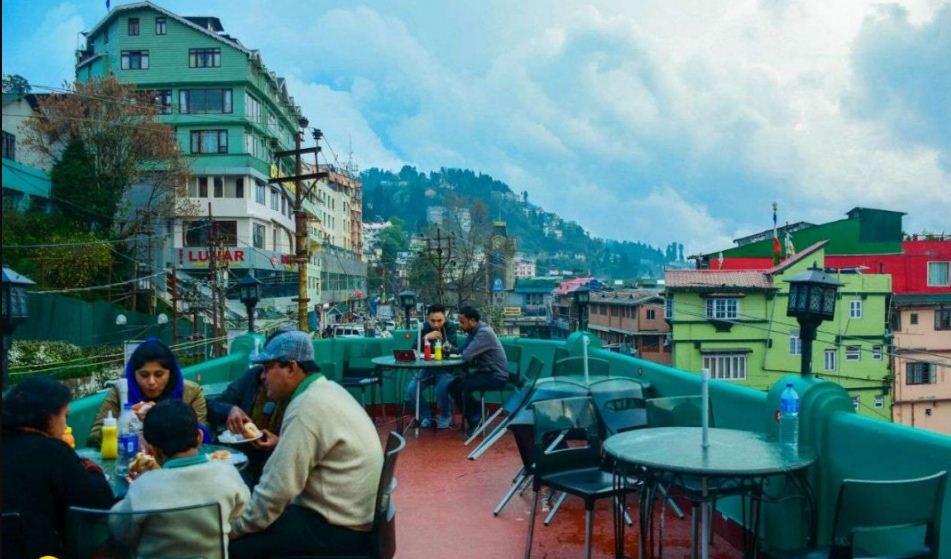

Glenary’s Bakery & Cafe: Glenary’s Bakery & Cafe, also known as the Glenary’s Cake Shop is located at the ground floor of a two storied white colonial building that prominently displays its name in front. This is a prominent landmark of Darjeeling and has existed since the British colonial days. It’s run by the Edwards family. Glenary’s is located on Nehru Road and at a stone’s throw away from the Mall (Chowrasta).

